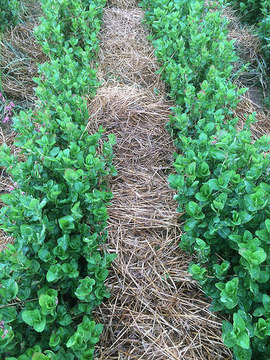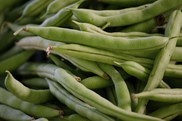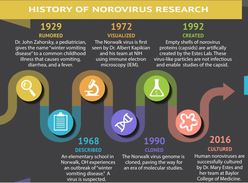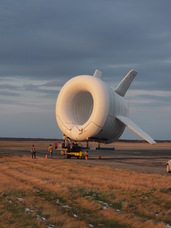|
Having trouble viewing this email? View it as a Web page.

|
|
|
Fresh from the Field is a weekly album showcasing transformative impacts made by grantees supported by the National Institute of Food and Agriculture.
NIFA
invests in and advances agricultural research, education, and extension and
seeks to make transformative discoveries that solve societal challenges.
August 3, 2017
|
|
|
NIFA
investments in science research at land-grant universities and beyond are having
a powerful impact in the marketplace. A recent USDA report
highlights how USDA investments – including NIFA – are resulting in technology transfer - or the adoption of research
outcomes and solutions for public benefit. NIFA support through programs such as the
Small Business Innovation Research (SBIR), and the Agriculture and Food Research Initiative (AFRI) and other programs are helping to spur advances that make
agriculture a high-performing sector of the U.S. economy. Read more about NIFA contributions to technology transfer.
Success Stories of the Week
 Jazzin' for blue jeans
Stony Creek Colors has
received support from the USDA Small Business Innovation Research (SBIR) Program. Located near Nashville, Tennessee, the company is developing land management and crop management principles for growing indigo plants and chemical processing
procedures for extracting the natural indigo dye from these plants. Next summer
it will have 30 farmers growing 180 acres of indigo. The company opened a 20,000
square foot processing facility where the indigo dye is produced. It is working
with Levi Straus, which will buy the natural indigo dye for production of a
line of jeans that are produced using the natural dye. Stony Creek Colors is
also in touch with Sensient, a company that deals with both natural and
synthetic pigments, and will explore the possibility of using the indigo dye
for various food applications. Stony Creek Colors team members have received
considerable publicity. They were selected to make a presentation at the Ag
Innovation Showcase in St. Louis in 2015, and recently they received the Martha
Stewart American Made award.
Read
the Martha
Steward American Made award story. Image courtesy of Sarah Bellos.
|
 A prescription for green beans in in Kentucky
Compared with other parts
of the country, residents of Appalachia face higher rates of chronic disease,
such as obesity, diabetes, and high blood pressure.
One eastern Kentucky
health agency is using its patient access to help promote healthier choices by
writing prescriptions for fresh produce. The Mountain Comprehensive Health
Corporation (MCHC) offers the Farmacy Health Improvement Program to
patients who are pregnant, have Type 1 diabetes, and eligible patients with
Type 2 diabetes, obesity, and/or hypertension. Through Farmacy, eligible
patients received vouchers to purchase fruits and vegetables at local county
farmers markets. The program also offered education on eating and
growing healthy foods.
The project's goal is to improve eating habits for low-income people while also improving
their health outcomes. The expected impact would be a lower impact on
healthcare costs by this group with improved health outcomes.
The 2016 survey results of
the Farmacy Health Improvement Program noted a number of results. Nearly 54 percent
of participants surveyed reduced the amount of money they typically spend on
healthcare. Additionally, nearly 70 percent froze or canned the fruits and vegetables they bought
through the FARMACY program. Fifty percent of participants saw improvements in
blood pressure.
The research is supported
by NIFA’s Food Insecurity
Nutrition Incentive (FINI) Grant Program.
Read about the Farmacy Health Improvement Program. Image provided by
Lance Cheung/ USDA.
|
News Coverage
 American-made flight fuel
Late last year, an Alaska Airlines Flight landed at Washington National Airport from Seattle
Tacoma International Airport. The arrival marked the first commercial flight
powered by a new renewable fuel made of wood waste, a cellulosic biofuel
blended with, and indistinguishable from traditional jet fuel. The biofuel was
one of many successful outcomes of the Northwest Advanced Renewables Alliance,
led by Washington State University. Since its launch in 2011, this
five-year, $39 million project has advanced research into biofuels and
biochemicals, fostered the Northwest regional biofuel industry and helped
educate tomorrow’s workforce on renewable energy. Thirty-two member
organizations contributed to research, education and extension efforts that
reached 38,724 K-12 students, 845 teachers, 213 undergraduate students, 199
graduate students, and 380 stakeholder groups. The project produced 44 publications,
135 news stories, 250 conference presentations, and posted more than 300 social
media posts. Moreover, the Alaska Airlines flight was the biggest news story of
the year for the airline, generating 313 articles, 200 broadcast stories, and
22,000 likes, shares, and social media comments within 48 hours of the flight.
NARA was funded through
NIFA Agriculture and Food
Research Initiative's Coordinated Agricultural Projects program.
Read about the historic flight in Architectural Digest. Image provided by WSU.
|
The Library
 NoroCORE cultures a cure
Norovirus, often known as
stomach flu, is so good at infecting humans that it’s been called the perfect
human pathogen, so virulent that a person can become sick within a few hours of
consuming as few as 20 virus particles. In the United States alone, there are
about 21 million cases each year that result in more than 800 deaths. The
NoroCORE team, led by North
Carolina State University, is a multi-disciplinary
collaborative of 30 researchers from 25 universities, leaders in the fields of
basic, food, and environmental virology. Their goal was to reduce the
burden of foodborne illness associated with viruses. NIFA supports the project
with a $25 million Agriculture and Food Research Initiative grant. In 2016, NoroCORE team members at the Baylor College of Medicine announced
a breakthrough discovery -- they successfully cultured the human norovirus in
intestinal cells. This goal had eluded scientists for more than 48 years.
Read more about NoroCORE.
|
Video
 It's a bird, it's a plane, it's BAT
Wind
energy is a promising renewable energy resource, but most traditional turbines
can’t capture winds at higher altitudes, where wind power is often much
stronger. Altaeros
Energies with support from the Small Business Innovative Research Program has
developed a Buoyant Airborne Turbine (BAT) to produce wind energy in remote
locations. The BAT is filled with helium and maintained at 1,000 feet, where wind
speed is stronger and more uniform than at ground level. The wind turbine
produces electricity that can be fed into a micro-grid to provide clean and
sustainable energy for remote, isolated communities. There is considerable
interest in this technology in Alaska and the company has received a $7 million
investment for future deployment of the BAT system in Japan. Altaeros Energies
was featured in CNN’s 2014 edition of The CNN 10: Inventions.
Watch
the Altaeros
Energies BAT video. Image provided by
Altaeros Energies.
|
Tweet of the Week
#NIFAIMPACTS
|
|

For more NIFA Impacts, visit nifa.usda.gov/impacts or the Land-Grant University Impacts website. Send us your NIFA-funded impacts at Impactstories@nifa.usda.gov or share them with USDA_NIFA on Twitter #NIFAImpacts.
NIFA invests in and advances agricultural research, education, and extension and promotes transformative discoveries that solve societal challenges.
Fresh from the Field is a weekly compendium of news and information that may be of interest to land-grant and non-land-grant universities, NIFA stakeholders, and other subscribers.
Editor: Falita Liles; Co Editor: Carlos Harris
|
|
|
|